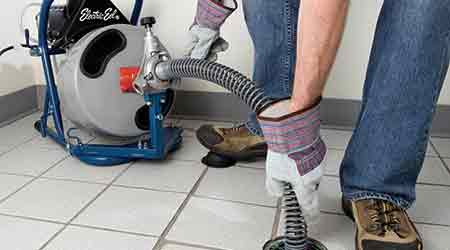Planning for Drain Cleaning Problems
Part 1 of a 3 part article on drain cleaning strategies
Institutional and commercial facilities rely on piping and plumbing systems for essential daily operations. To meet this need, maintenance and engineering managers need to develop and implement a preventive maintenance program that enables front-line technicians to efficiently locate and troubleshoot blockages in pipes and prevent future blockages from occurring.
By understanding the roles of key drain-cleaning equipment, including handheld units, water jets, sectional machines, and inspection technology, managers can develop and implement a drain-cleaning program that puts key pieces of equipment to the best use, based on the age and condition of piping systems and their repair histories.
Key equipment
Handheld units. Examples of handheld drain cleaners include: a snake, a 2-foot long flexible cable with a handle for cleaning fixtures, such as sinks, tubs, and showers where the trap is close to the outlet; a manual drain cleaner, which usually has a 1/4- or 3/8-inch, 75-foot-long cable for light cleaning in longer drains; a power drain cleaner, which is a drill motor or power-driven rotary device with a 1/4- or 3/8-inch, 75-foot-long cable for handling tougher jobs in longer runs; and a pickup tool with a remote gripper that technicians can use to retrieve rocks or other hard objects from traps or cleanouts within a few feet of the cleanout opening.
Water jets. Technicians can use an off-the-shelf jetter or make one with a pressure washer. The pressure-washer conversion involves assembling three components. First, a jumper hose attaches to the pressure washer. Then a ball valve for controlling flow attaches to the other end of the jumper. The discharge side of the ball valve attaches to the second jumper hose, the other end of which attaches to the inlet on the jetter reel. The two jumper hoses and the ball valve are the three components of the conversion kit.
To use either the off-the-shelf or conversion jetter, first select the right nozzle and attach it with Teflon tape to the jetter discharge. Then insert the hose into the drain cleanout and turn on the water. Feed the hose into the drain, and work it back and forth until it meets an obstruction. This will clear the solid obstruction, allowing the jetter to continue into the drain to completely flush it out.
Related Topics:














